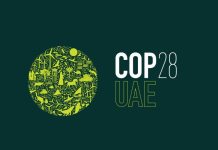This is second part of article Partnerships for Success: How Cultural Heroes and Sustainable Pioneers are Building a Better Belize Part 1
For example, in Belize, Mr. Hannan’s team has invested in a “pop-up” restaurant, Limilita , which builds its daily menu exclusively on local food suppliers. The menu changes daily and represents healthy local fare that is responsibly sourced, and subsequently supports the local fishing and agricultural economy.
The Foundry Collective team’s vision of sustainable living hasn’t ended there, however. They’ve collaborated with Samuel Amoia, a New York City designer, and established the sustainable furniture collection Itz’ana Home. Itz’ana Home is a fusion of Mr. Amoia’s visionary design and locally crafted, finished bespoke home goods. Itz’ana Home’s unique pieces are handmade from personally selected hardwoods by local Central American artisans.
Screenshot of Limilita website
Like many countries in Central and Latin America, Belize remains majestic, underdeveloped and at a development crossroad. Just as the Maya ruins continue to provide intrigue and wonder, Belize’s rich history provides the backdrop for its future. Tourism and the service industry represent the lion’s share of the Belize economy, but the country continues to carry a significant foreign debt burden. While tourism has enriched the country, Belize contends with a diversity of development challenges including high rates of unemployment, crime, and HIV/AIDS.
Hannan remarked on this dichotomy, “As a developer, we feel a responsibility to give back to the community and better these social and economic challenges, but it’s also important to understand that Belize is a place of contrast. The country is prized by locals and travellers for its pristine environment and its underdeveloped charm. We want to protect what makes Belize unique, which is its reputation for being a place of adventure, wonder and ecologic integrity. By promoting sustainability with solar, the entire community benefits.”
Belize shares its borders with Mexico to the north, Guatemala to the west and south, and the Caribbean Sea to the east. The country’s land area is about the size of the State of Massachusetts in the U.S. With a population just under 350,000, Belize has the lowest population density among Central American countries. Belize’s economy is primarily driven by tourism (services represent >72% of GDP) followed by a mix of key exports including crude oil, marine products, sugar, citrus, and bananas (agriculture represents about 13%, and industry 15% of GDP respectively).
Belize, which has only been independent for thirty-five years, is a country in transition, working hard to sustain its cultural and ecological heritage. Approximately 53% of Belize’s electricity is derived from hydroelectric (27.3%) or other renewable (25.8%) resources. Belize is rated sixth in the world behind Denmark, Germany, Nicaragua, Spain, and Portugal with regard to the percentage of installed electric generation that comes from renewable sources (defined as wind, solar, geothermal, and wave/tidal energies).
Belize delivers an unparalleled utopia for eco-tourists. Intersecting both North and South America, Belize transcends a range of climates supporting an abundance of habitats and diversity of wildlife. The country’s terrestrial lands are some of the most protected in the America’s. Over 60% of the land surface in Belize is covered by forest, and nearly 37% of the land area is officially protected.
The second-largest barrier reef in the world, the Belize Barrier Reef , occupies nearly 190 miles of the country’s territorial waters. The reef is one of the most diverse ecosystems in the world and is also recognized by UNESCO as a World Heritage Site for its unique habitats and significance to conservation of biodiversity. The reef provides a critical habitat in support of the country’s fishing industry. As such, the reef is popular among snorkelers and scuba divers as one of Belize’s top tourist destinations.
Belize Barrier Reef
Another tourist favourite, the Cockscomb Basin Wildlife Sanctuary is considered one the premier efforts supporting the preservation of jaguars in natural habitat. Further, the Crooked Tree Wildlife Sanctuary, recognized as a Wetland of International Importance under the Ramsar Convention , encompasses 16,400 acres of pine savanna, logwood swamps, lagoons and creeks, which provide essential habitat for globally endangered species such as “Hicatee,” the Central American River Turtle, Yellow-headed Parrot and the Mexican Black Howler Monkey. Crooked Tree’s pine savannas also provide significant habitat for the Jabiru stork.
Entrusted by his customers and locals, Hannan is intimately aware of the ecological importance of Belize. Hannan noted, “Tourism is the country’s number one industry, and we are a part of that. The service economy has enormous potential. The Maya ruins, the barrier reef and wildlife sanctuaries, are core attractions for global travelers. But an essential question for us, one that we work at every day, is how do you grow and not exceed your limits? How do you hold onto the unique character of the region and its people with dignity?”
For Hannan and the Foundry Collective, local-level partnerships have been integral to achieving success. Fernando Paiz, a successful businessman with interests in real-estate, telecommunications, agriculture, energy and retail, has been a key advisor and partner to the Foundry Collective team in Belize.
Through their association with Mr. Paiz the Foundry Collective team has been able to obtain regional credibility and reputational strength as they’ve put their creative design and development solutions to the test.
Mr. Paiz, who also serves as the President of the La Ruta Maya Foundation, has been instrumental in preserving the Maya heritage. The foundation has secured, cataloged, and preserved more than 3,300 antiquities into a world-class collection that they are working to make accessible to the public. Hannan noted that they were collaborating with Mr. Paiz to establish a Belize arm of the La Ruta Maya Foundation . More than 250 unique artifacts have already been donated, some of which will be on display at the Itz’ana and its sister resort, Ka’ana.
The Altun Ha archaeological site in Belize, a remnant of Mayan culture
It’s only fitting that Mr. Hannan’s team is actively supporting Mr. Paiz to conserve and educate the richness of the Mayan culture. Their efforts are symbolic of the sustainable future they’ve committed to jointly pursue at Itz’ana Resort and Residences and throughout the region.
Thousands of years ago, the Mayans discovered balance by building and integrating structures and monuments in their natural surroundings, and orchestrating them to the movement of the stars. Today, through the efforts of cultural heroes and sustainable development pioneers like Mr. Hannan and Mr. Paiz, Belize has partners to preserve its past, protect its future, and find its new-age sense of balance and prosperity.
Hannan remarked, “There is so much at stake in Belize, and the future of the country is being decided by many. We view our role as developers as bettering the destination in ways that build sustainable value, not just economic profit. That’s why we’ve put our money where our mouth is with our developer financing option for solar at Itz’ana. For us, this is a partnership for creating a better future in Belize.”
Mark Coleman is a recognized voice, business advisor and consultant on the convergence of sustainability, environmental stewardship, energy, technology, and innovation.
Mr. Coleman is an active blogger with the Huffington Post, and has published numerous articles with leading organizations including GreenBiz.com, Environmental Leader, Triple Bottom Line Magazine, among others.
Mr. Coleman is the President of Convergence, Mitigation, Management (CMM) LLC, which provides custom business intelligence and advisory services for business, government, applied research, not-for-profit, and non-governmental organizations.
Mr. Coleman has advised hundreds of organizations in the areas of sustainability, risk, innovation, operational effectiveness, and business strategy. Much of this work led Mr. Coleman to write and publish two books, Time To Trust: Mobilizing Humanity for a Sustainable Future (Motivational Press 2014, www.timetotrustbook.com) and The Sustainability Generation: The Politics of Change and Why Personal Accountability is Essential NOW! (SelectBooks 2012, www.thesustainabilitygeneration.com) both of which highlight his perspective on holistic systems-level logic and theory for advancing humanity beyond the status-quo toward more integrated and mutual models of sustainable development.
Mr. Coleman currently serves on the board of the Sustainable Manufacturer Network (http://sustainablemfr.com/), and on the board of a not-for-profit organization, B9 Plastics (www.b9plastics.org) involving global water development concerns.
Mr. Coleman resides in the Finger Lakes region of New York with his wife Aileen and two sons, Owen and Neal.
Web:
Website: www.timetotrustbook.com
Twitter: @TheSustainGen



























